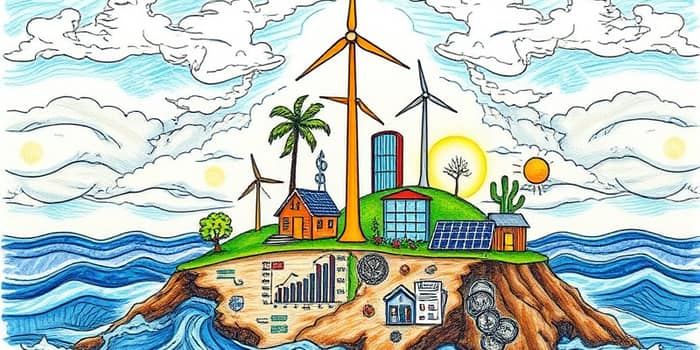
As global weather patterns grow ever more erratic and policy shifts accelerate, investors face a moment of truth. Traditional models and static allocations no longer suffice. A proactive stance is vital to safeguard assets and seize emerging opportunities.
Investors must recognize the dual nature of climate-related threats. Physical risks from extreme weather events—floods, wildfires, droughts, storms and rising seas—can inflict direct damage on real estate, infrastructure and supply chains. Meanwhile, transition risks from regulatory shifts and technological disruption can trigger sudden valuation swings and stranded assets within high-carbon sectors.
These forces carry staggering dimensions. Norway’s NBIM warns of a potential 19% loss on US equities by 2100 under a 3°C warming path, while mainstream models like MSCI CVaR forecast only a 2–4% decline. Such divergence fosters a false sense of security among managers and delays meaningful action.
Widely used analytics often omit systemic and macroeconomic impacts that cascade through markets. Standard Value at Risk frameworks typically assess direct exposures but ignore nonlinear tipping points, feedback loops and sovereign debt strain triggered by climate shocks.
By underestimating long-term losses, traditional tools lull institutions into complacency. In reality, NGFS scenarios suggest global GDP could contract by 30% by century’s end—50% in worst-case tail events—while short-term growth may suffer up to a 3% hit within five years due to acute disasters.
To overcome these blind spots, leading investors leverage NGFS trajectories covering 1.5°C to 3°C pathways. Scenario design distinguishes:
Direct insured losses from natural catastrophes reached $154 billion in 2024, while total economic losses soared to $417 billion. Such figures underscore the urgency of embedding robust climate scenarios into capital allocation decisions.
Leading frameworks emphasize early integration of physical climate risk in investment processes. By embedding forward-looking stress tests and rebalancing triggers, investors can allocate capital dynamically across scenarios.
Corporate and sovereign managers alike must elevate engagement. Pressing portfolio companies to enhance climate resilience, adopt robust reporting metrics, and pursue adaptive innovations is essential for long-term value preservation.
As policy landscapes diverge globally, investors face uneven regulatory timelines and evolving carbon frameworks. This fragmentation creates both risk and opportunity, depending on positioning and local expertise.
Institutional voices—from sovereign wealth funds to ESG-focused pension strategies—stress a whole-system approach blending mitigation and adaptation. Insight Investment and NBIM caution against underestimated risks and advocate for robust model enhancements plus active policy dialogue.
Despite clear guidance, barriers persist. Overreliance on dated models fosters inertia, while mandate constraints can inhibit reallocation away from legacy sectors. Collective action is vital: scaling Nationally Determined Contributions and mobilizing private capital for adaptation will require unified investor coalitions.
Investors should shift from mere risk avoidance to resilience and opportunity identification. Green bonds and adaptation bonds can channel funds into critical infrastructure, while blended finance structures leverage public guarantees to de-risk private investments.
Cross-industry collaboration—establishing common reporting standards, stress testing methodologies and scenario disclosure practices—will enable markets to price climate risk more accurately. By synthesizing mitigation and adaptation strategies, portfolios can remain both sustainable and competitive in an era of unprecedented change.
References













